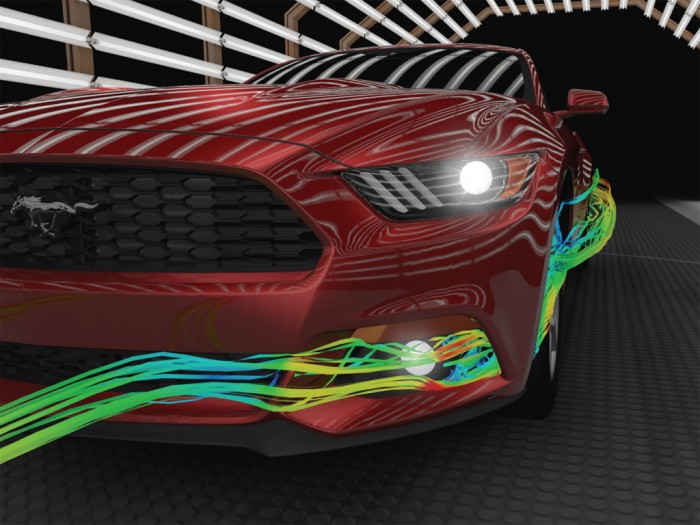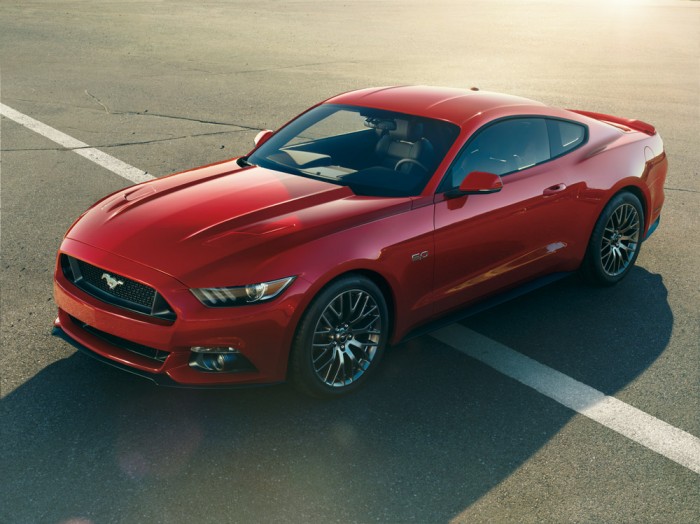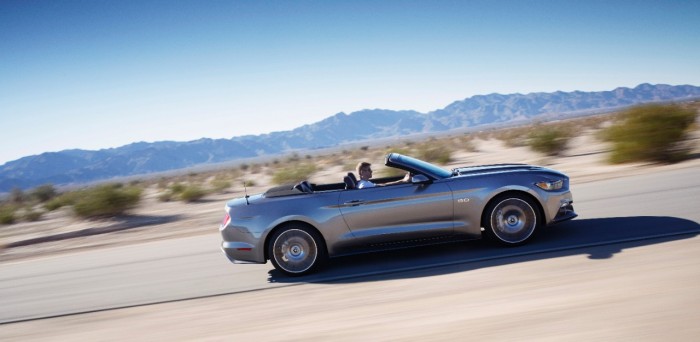Innovative 2015 Mustang Aerodynamics Allow for Improved Performance
The 2015 Ford Mustang is garnering a lot of attention as we build up to the 50th anniversary of the iconic pony car. According to the Blue Oval’s latest update on the 2015 model, the experts have reimagined the classic shape of the Mustang so that its iconic character is retained yet fuel efficiency and performance are improved by subtle aerodynamic alterations.
“Even with the classic, forward-leaning shark-bite grille and a more aggressive stance for the new Mustang, the aerodynamics team has made it slice through the air better for increased fuel efficiency while also keeping it planted to the road at higher speeds,” explained Dave Pericak, Mustang chief engineer. “The best part is that they met the challenge of creating the sleekest Mustang yet without resorting to a characterless teardrop shape.”
The 2015 Mustang aerodynamics play a crucial role for the American muscle car. As speed increases, the force needed to push forward and overcome drag shoots up exponentially. Ford gives this example: “twice the speed requires eight times the horsepower.” Improving the aerodynamics of the 2015 Mustang while maintaining the classic design, therefore, was one of the biggest challenges for the engineers, but also among the most important.
“With the new Mustang, we spent about twice as much time running aerodynamic simulations and doing wind tunnel tests than the previous Mustang,” admitted Carl Widmann, aerodynamics engineering manager. “Major advances in our computational fluid dynamics capability let us test the effect of design changes and give feedback to the studio in less than 48 hours so they had more opportunity to try out different styling ideas.”
So what do the 2015 Mustang aerodynamics tweaks include? For starters, Ford wanted to reduce aerodynamic drag from the rotating wheels of the Mustang but did not want to compromise the appearance by enclosing them in skirts. Instead, Widmann and his team placed vertical slots in the outer edge of the front fascia that are meant to channel air from the Mustang’s front in the wheel wells, redirecting it across the outer surface of the wheels.
In addition, Widmann and his team designed three different grilles, each one for one of the three specific engines. These grilles allow just enough air to flow into the engine bay to keep the engine cool, but no more than that, to decrease drag. The 2.3-liter EcoBoost®-powered Mustang will be even more efficient with active grille shutters.
Finally, the aerodynamics team worked to keep the car planted. Splitters and air dams located below the front fascia will minimize air under the car while vents in the hood will contribute to keeping the Mustang planted.
“We worked closely with the vehicle dynamics engineers that are tuning the chassis to make sure our experimental results for lift correspond to what they feel on the car when driving at the track,” explained Widmann. “They provided us with some great feedback that we incorporated into our efforts in the tunnel, and the results are definitely noticeable when driving at high speeds.”
After all was said and done, overall drag force for the 2015 Mustang was cut by 3 percent, which will result in a 1 percent increase in fuel efficiency.
Timothy Moore takes his leadership inspiration from Michael Scott, his writing inspiration from Mark Twain, and his dancing inspiration from every drunk white guy at a wedding. When Tim is not writing about cars and money, he’s working on his novel or reading someone else’s, geeking out over strategy board games, hiking with his pooch, or channeling his inner Linda Belcher over beers with his friends. See more articles by Timothy.




